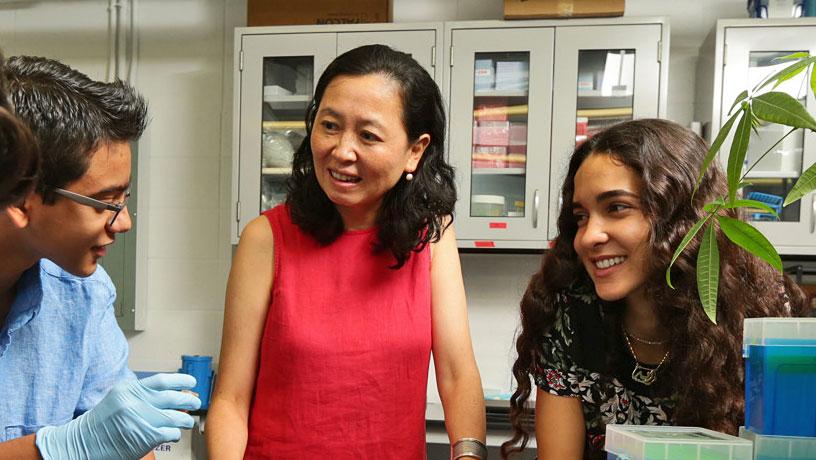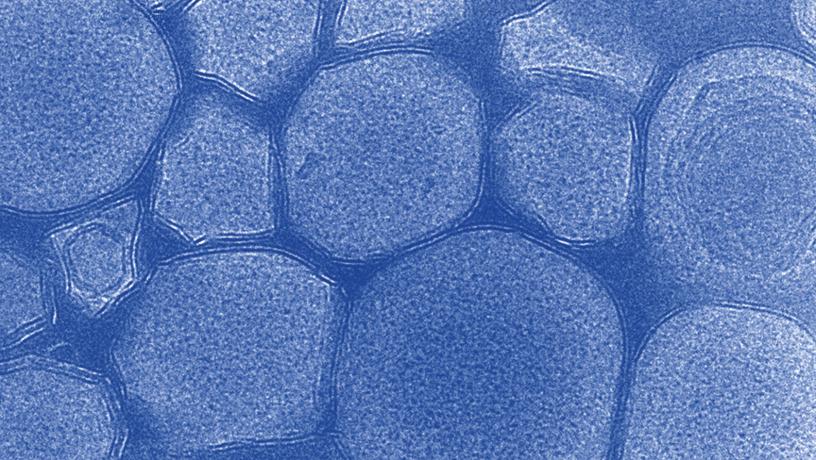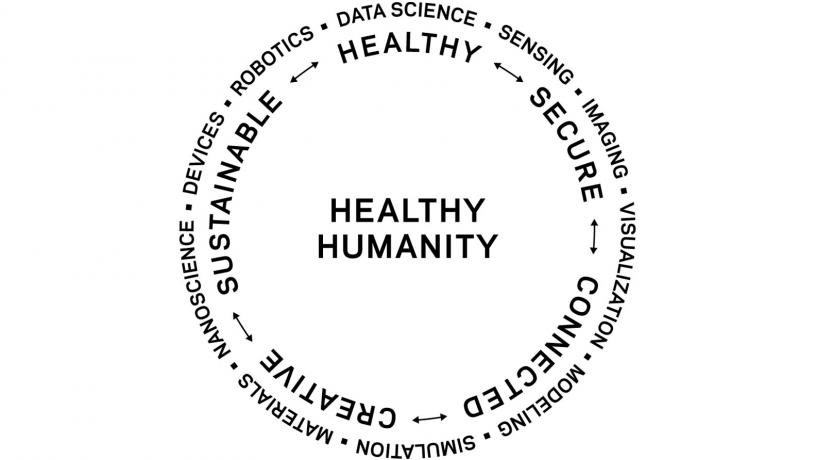Complex Tissue Regeneration

Helen Lu (center) with students

Engineered exosomes

Imagine a world where new materials inspired by nature help the body heal itself after injury.
When the body faces injury—whether from accidents or athletic performance—tissue engineering promises restoration through the right combination of materials and processes. Though researchers are adept at creating single types of tissue, effective regeneration must recreate the body’s natural synchrony between tissues. This connectivity is a hallmark of healthy musculoskeletal organ systems, where, for example, muscle, tendon, and bone must work together to enable all physical activity, from the routine to the remarkable.
As director of the Biomaterials and Interface Tissue Engineering Laboratory, Professor of Biomedical Engineering Helen Lu focuses on how these different units form and connect in the body.
“When injury happens, we don’t get to choose which tissue gets injured,” explains Lu. “You really have a composite tissue regeneration problem.”
To regenerate these complex systems, Lu’s group focuses on four interfaces: ligament to bone, tendon to bone, cartilage to bone, and periodontal ligaments (Lu also has tenure at Columbia’s College of Dental Medicine).
Progress requires understanding the mechanisms that govern regeneration. Lu’s hypothesis is that cellular communications play a key role in this process. She designs bio-inspired materials to act as “scaffolds” in the body and coach cells to behave in a certain way, enabling the formation of intricate tissues and tissue integration.
Being at Columbia enhances her research through collaborations with top medical experts in the New York area, as well as through the resources of Columbia’s vibrant startup culture. Notably, she is working with William Levine, chair and Frank E. Stinchfield Professor of Orthopedic Surgery at Columbia University Irving Medical Center, on a nanofiber interface scaffold for rotator cuff surgery. She and Levine, who is also head team physician for Columbia University Athletics, plan to translate their research into a startup.
“When you are mimicking nature, how best to tap into the body’s own ability to heal without overengineering?” she asks. “How does Mother Nature do it? The detective work is thrilling.”
